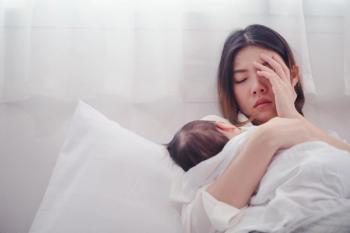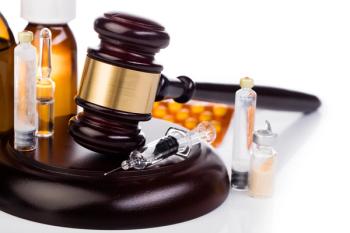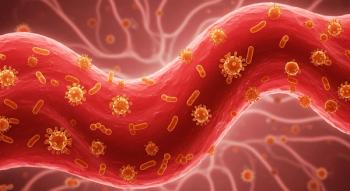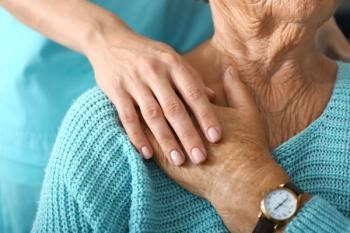
HPV Education: Focus on Cancer
Education efforts are underway to improve HPV vaccination rates.
Despite recent efforts to improve human papilloma virus (HPV) vaccination rates, according to the CDC rates remain low in the United States and are lower than many other
In the past, the focus of HPV vaccination information has been on the sexual route of transmission of the virus and has been concentrated on preventing infections in women. Educational efforts have failed to focus on the long term effects of HPV infections on all genders and the cancer prevention benefits of the HPV vaccine.2,4 If health care professionals can make an impact by providing vaccine information, continued efforts should be made to educate parents and adolescents about the cancer-preventing effects of the HPV vaccine in both men and women.5
The sexual distribution of the virus may deter many adolescences from discussing the vaccine with a parent or guardian. If parental consent was not required, more adolescents may choose to become vaccinated. An increased willingness to become vaccinated was discovered following a survey of adolescents who learned about the virus and link to cancer.6 However, the same study demonstrated that after learning about the virus, adolescents were less willing to discuss the HPV vaccine with a parent or guardian.6
Parental consent laws, such as those found in in Washington State, would require an adolescent to discuss the vaccine because consent is required for all vaccines when a patient is under the age of 18. This is contrary to another law which allows a patient 14 years of age and older to consent to treatment related to sexual health.7 Preventative therapies, such as immunizations related to sexual health, are excluded due to the language of this legislation. Vaccination rates for HPV could increase significantly if the adolescent was allowed to give their own consent, starting at the age of 14.
Adolescent receptiveness to the vaccine can increase with education, but without changes to parental consent laws, vaccination rates may not change. Continued education is needed for adolescents, including strategies to overcome hesitancy to discuss sexual health with a parent or guardian. Additionally, direct education from the healthcare provider to the parent or guardian should emphasize cancer risks associated with HPV infection, while including data demonstrating that no correlation exists between the vaccination and increased sexual activity.8,9 Future educational efforts need to focus on these aspects until legal restrictions on adolescent consent are revised.
This article was co-written with Shannon Panther, PharmD, and Julie Akers, PharmD.
References
- Teen Vaccination Coverage. Centers for Disease Control and Prevention Website. www.cdc.gov/vaccines/parents/vacc-coverage-teens.html. Accessed May 20, 2016.
- Holman DM, Benard V, Roland KB, et al. Barriers to human papillomavirus vaccination among US adolescents: a systematic review of the literature. JAMA Pediatr. 168 (1):776-82. Doi: 10.1011/jamapediatrics.2013.2752.
- McKeirnan, K. Factors Influencing the Decision to Receive an Influenza Vaccination Among Manufacturing Plant and Day Care Center Employees. Workplace Health Saf. 64(5):228. doi: 10.1177/2165079916632773.
- White L, Waldrop J, Waldrop C. Human Papillomavirus and Vaccination Of Males: Knowledge and Attitudes Of Registered Nurses. Pediatr Nurs. 2016;42(1):21-30, 35.
- Beavis AL, Levinson KL. Preventing Cervical Cancer in the United States: Barriers and Resolutions for HPV Vaccination. Frontiers in Oncology; 6:19. doi:10.3389/fonc.2016.00019.
- Panther SG, McKeirnan KC, Akers JM. Teaching About Human Papillomavirus: Lessons Learned. Workplace Health and Safety. http://journals.sagepub.com/doi/abs/10.1177/2165079917712528?journalCode=whsd. Published July 26, 2017. Accessed April 2, 2018.
- . Washington State Legislature. RCW 70.24.110. https://app.leg.wa.gov/rcw/default.aspx?cite=70.24.110. Accessed April 2, 2018.
- Bednarczyk RA, Davis R, Ault K, et al. Sexual activity—related outcomes after human papillomavirus vaccination of 11-to 12-year-olds. Pediatrics. 130(5):798-805. doi: 10.1542/peds.2012-1516. 130.5 (2012): 798-805.
- Bailey HH, Chuang LT, DuPont NC, et al. American Society of Clinical Oncology Statement: Human Papillomavirus Vaccination for Cancer Prevention. J Clin Oncol. 34(15):1803-12. doi: 10.1200/JCO.2016.67.2014
Newsletter
Stay informed on drug updates, treatment guidelines, and pharmacy practice trends—subscribe to Pharmacy Times for weekly clinical insights.




















































































































































































































